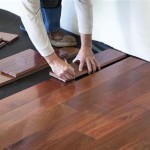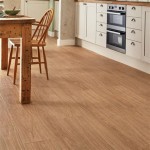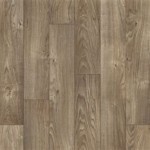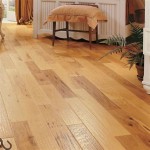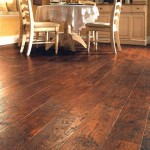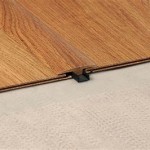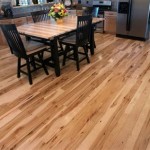Can You Fix Lifted Laminate Flooring? A Comprehensive Guide
Laminate flooring, a popular choice for homeowners due to its affordability and aesthetic appeal, can sometimes suffer from lifting issues. This unsightly problem can detract from a room's appearance, and in severe cases, create tripping hazards. Understanding the causes of lifted laminate and the potential repair solutions is crucial for maintaining the integrity and longevity of this flooring type. This article provides a comprehensive overview of the topic, exploring the common reasons for lifting, diagnostic techniques, and various methods for addressing the problem, ranging from simple DIY fixes to professional interventions.
Laminate flooring is constructed from several layers, including a core board made of high-density fiberboard (HDF) or medium-density fiberboard (MDF), a decorative photographic layer that simulates wood or stone, and a durable wear layer on top. The installation process typically involves a floating floor system, where the planks or tiles are connected via interlocking edges and rest on an underlayment rather than being directly adhered to the subfloor. While this method offers ease of installation and flexibility, it also makes the floor susceptible to movement and lifting under certain conditions.
Identifying the Cause of Lifted Laminate Flooring
Before attempting any repairs, accurately diagnosing the underlying cause of the lifting is paramount. Several factors can contribute to this issue, and identifying the root problem will dictate the most effective solution. Ignoring the cause and simply addressing the symptom (the lift) will likely lead to a recurrence of the problem in the future.
One of the most frequent culprits is moisture exposure. Laminate flooring is particularly vulnerable to water damage because the core board, typically MDF or HDF, readily absorbs moisture. This absorption causes the board to swell, leading to buckling and lifting. Sources of moisture can include spills, leaks from appliances or plumbing, inadequate moisture barriers during installation, or high humidity levels in the environment. Inspecting nearby appliances, plumbing fixtures, and the perimeter of the room for signs of water damage is a critical first step.
Another common cause is improper installation. If the subfloor was not properly prepared – meaning it was uneven, dirty, or not adequately dry – the laminate planks might not lay flat, leading to stress and eventually lifting. Insufficient expansion gaps around the perimeter of the room can also contribute to this problem. Laminate flooring needs room to expand and contract with temperature and humidity changes. Without adequate space, the pressure can cause the floor to buckle and lift. Finally, using an incorrect underlayment or failing to properly engage the interlocking edges of the planks during installation can also lead to lifting.
Subfloor imperfections can also directly cause laminate lifting. An uneven subfloor creates stress points on the laminate, leading to movement and separation of the planks. Cracks or other damage in the subfloor can also contribute to localized lifting. Before installing laminate flooring, it is crucial to ensure that the subfloor is level, clean, and structurally sound. Self-leveling compounds can be used to address minor imperfections, and larger cracks or damage should be repaired before proceeding with the installation.
Finally, general wear and tear, especially in high-traffic areas, can gradually weaken the interlocking edges of laminate planks, leading to separation and lifting. In some cases, the wear layer itself might become damaged, exposing the core board to moisture and accelerating the deterioration process. While laminate flooring is designed to be durable, it is not impervious to wear and tear, and eventually, it might require repair or replacement.
Addressing Minor Lifting and Buckling
Once the cause has been identified, the appropriate repair method can be determined. For minor lifting and buckling, particularly if caused by seasonal humidity changes or slight subfloor imperfections, several DIY solutions can be attempted. These solutions typically involve applying pressure to the lifted area to encourage the planks to settle back into place.
One common technique utilizes weights. By placing heavy objects, such as books or furniture, directly on the lifted area for an extended period, the planks can gradually be pressed back into position. It's important to protect the laminate surface with a soft cloth or padding to prevent scratching or denting. The weight should be distributed evenly across the affected area. This method is most effective for minor lifting that has occurred relatively recently.
Another approach involves using a rubber mallet and a tapping block. Carefully tapping the edges of the lifted planks with a rubber mallet, using a tapping block to protect the laminate surface, can help to re-engage the interlocking edges. This method is best suited for planks that have slightly separated but are otherwise intact. It's crucial to apply gentle pressure and avoid excessive force, which could damage the planks. Starting from the edge of the lifted area and working outwards can help to gradually realign the planks.
For minor gaps between planks, wood glue or laminate repair kits can be used. Carefully apply a small amount of wood glue to the exposed edges and then press the planks together. Wipe away any excess glue immediately with a damp cloth. Laminate repair kits typically contain a filler that matches the color of the flooring. This filler can be used to fill small gaps and cracks, creating a more seamless appearance. Follow the manufacturer's instructions carefully when using these products.
If moisture is suspected as a contributing factor, addressing the source of the moisture is crucial before attempting any repairs. Using a dehumidifier to lower the humidity level in the room can help to prevent further swelling and lifting. Ensuring proper ventilation can also help to dry out the flooring. In cases of significant water damage, it might be necessary to remove and replace the affected planks.
Addressing Significant Lifting and Damage
For more significant lifting, extensive water damage, or situations where the DIY methods have proven ineffective, professional intervention might be necessary. Ignoring these problems, especially when moisture is involved, can lead to mold growth, structural damage, and a significant reduction in the lifespan of the flooring.
When significant lifting is observed, removing and replacing the affected planks is often the most effective solution. This process involves carefully disassembling the flooring around the damaged area, removing the lifted planks, and installing new planks in their place. It's essential to use planks that match the existing flooring in terms of color, pattern, and thickness. If matching planks are unavailable, it might be necessary to replace a larger section of the floor to ensure a consistent appearance.
Before installing new planks, thoroughly inspect the subfloor for any signs of damage or moisture. Repair any imperfections or address any moisture issues before proceeding. Using a moisture meter to check the moisture content of the subfloor is crucial to ensure that it is within acceptable limits. Replace any damaged or deteriorated underlayment before installing the new planks. Follow the manufacturer's instructions carefully when installing the new planks, paying particular attention to the interlocking edges and expansion gaps.
In cases of extensive water damage, it might be necessary to remove and replace the entire floor. This is a more extensive and costly undertaking, but it is often the only way to ensure that all traces of moisture and mold are removed. Before installing a new floor, thoroughly inspect the subfloor and make any necessary repairs. Consider using a moisture-resistant underlayment to help protect against future water damage. When choosing a new flooring material, consider options that are more resistant to moisture, such as vinyl or tile, if moisture is a recurring problem.
Professional flooring contractors have the experience and expertise to accurately diagnose the cause of lifted laminate flooring and implement the appropriate repair solutions. They also have access to specialized tools and equipment that can make the repair process more efficient and effective. Hiring a professional can save time and effort, and it can also ensure that the repairs are done correctly, preventing future problems. When hiring a professional, be sure to get multiple quotes and check their references before making a decision.
Preventative measures are key to minimizing the risk of lifted laminate flooring. Consistently cleaning up spills promptly and using mats in high-traffic areas can help protect the flooring from damage. Maintaining a consistent humidity level in the home can also help prevent excessive expansion and contraction of the planks. Regular inspections of plumbing fixtures and appliances can help identify and address leaks before they cause significant damage. Furthermore, when installing new laminate flooring, following the manufacturer's instructions carefully and ensuring that the subfloor is properly prepared is crucial for long-term performance. By taking these preventative steps, homeowners can significantly reduce the likelihood of experiencing lifted laminate flooring.

Why Is My Laminate Floor Lifting Factory Direct Flooring

How To Fix A Bent Or Raised Up Edge On Your Luxury Vinyl Plank Flooring

How To Fix Laminate Flooring That Is Lifting Liquidators

How To Repair Laminate Flooring The Home Depot

How To Fix Laminate Flooring That Is Lifting

Lifting Laminate Flooring Repair Diy How Fix Replace Boards Damaged Floor Pet

Simple Guide On How To Fix Laminate Flooring That Is Lifting

How To Fix Lifting Laminate Floor And Base Board Bubble Tiktok

Laminate Floor How Can I Secure Vinyl Plank Flooring That Has Lifted Home Improvement Stack Exchange

How To Fix Laminate Flooring That Is Lifting
Related Posts

